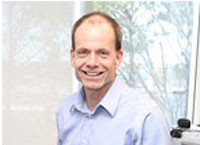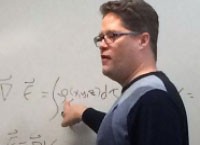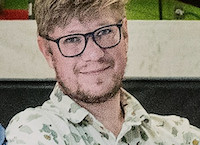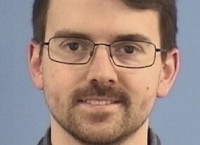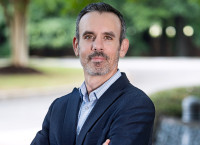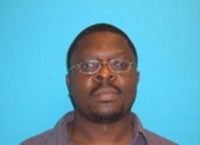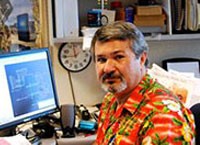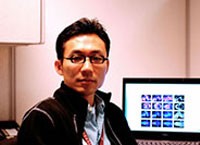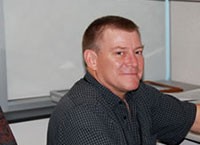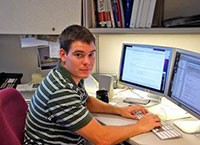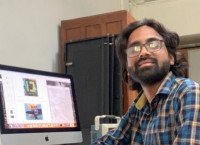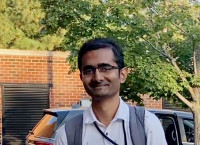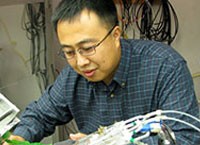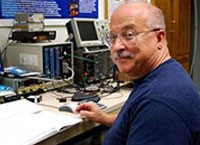| Tel:(757) 269-7090 Email:drew@jlab.org |
Drew has led the Group since 2008 and has over 30 years of experience in the operation, design and construction of scintillator and solid state-based radiation detectors for both non-imaging and imaging applications. He has used his radiation physics expertise for applications in nuclear physics, astronomy, and bio-medical research. Drew has authored or coauthored more than 100 articles on instrumentation development and applications that have been published as research papers, review articles, book chapters or conference records. He has several U.S. patents. He received a 2009 Excellence in Technology Transfer Award from the Federal Laboratory Consortium. Drew is also a Senior Technology Transfer Adviser to Jefferson Lab's Research and Technology Partnerships Office. In that role, he assists in advancing the development of technology from the lab's research programs and facilitating the transfer of technologies to industry. Drew received his Ph.D. in Applied Science from the College of William and Mary in Virginia in 1998.
| Tel:(757) 269-6771 Email:christy@jlab.org |
Eric is Deputy Group Leader with more than 20 years of experience in nuclear physics detector system design and construction. His recent research activities center on the use tracking drift chambers, scintillators and PMTs in nuclear physics research. As a nuclear physicist his research focuses on experimental investigations into the structure of protons and neutrons as determined by quantum chromodynamics (QCD), and the modification of this structure in the nuclear medium through measurements of elastic form factors, inelastic structure functions and moments, and the transition of these observables from the regime perturbative QCD to the regime dominated by hadron degrees of freedom. This is accomplished through an experimental program using complementary electromagnetic and weak interaction probes utilizing the high intensity electron beam at Jefferson Lab and the NUMI neutrino beam at Fermilab, respectively. In support of these international experiments have led multiple particle detector development and construction projects. Christy leads the Group's effort in the application of micropattern gaseous detectors (MPGDs) in proton beam therapy. Prior to joining the Group Eric was Associate Professor of Physics at Hampton University. He received his Ph.D in Physics in 1999 from the University of Kentucky.
| Tel:(757) 269-7449 Email:berdnik@jlab.org |
Vladimir is a research scientist for the Group and is Level 2 Cost Account Manager (CAM) for installation of the Hall A MOLLER experiment. He has extensive experience in the design, construction and testing of gas based and scintillator based detector technology used in nuclear physics research. Examples include his involvement in Hall D in the design, construction and calibration of the Forward Drift Chambers (FDC) detector of the GlueX spectrometer and the Compton Calorimeter (CCAL) of the PrimEx-eta experiment. He has been supporting Neutral Particle Spectrometer (SNP) detector testing and commissioning in the Hall C. Vladimir is active on the construction of the FCAL PbWO insert. Prior to joining the Group he was a Research Scientist in the Physics Department at the Catholic University of America, Washington D.C. Vladimir received his Ph.D. in Physics in 2017 from the National Research Nuclear University (MEPhI).
| Tel:(757) 269-6250 Email:cameronc@jlab.org |
Cameron is a detector physicist with a background in experimental nuclear physics and industrial medical imaging research. His recent work focuses on bridging between academic basic research and applications transferring to industry. His recent work in industry focused on semiconductor detectors for energy resolved photon counting CT (PCCT) which allow for the simultaneous acquisition of the higher spatial resolution and intrinsically material sensitive spectrally resolved X-rays needed for the next generation of diagnostic medical imaging. His work as a nuclear physicist focuses on precisely measuring the weak interaction to reveal the neutron skins of the Calcium-48 and Lead-208 nuclei which are relevant to effective field theory descriptions of neutron rich nuclear matter, even to the saturation densities relevant in the interiors of neutron stars, linking the laboratory world to the contemporary multi-messenger astronomy of neutron star mergers also accessible with the NICER telescope and LIGO. He received his Ph.D in Physics in 2021 from SUNY Stony Brook.
| Tel:(757) 269-7449 Email:dion@jlab.org |
Mike is a research scientist for the Group and is Level 2 Control Account Manager (CAM) overseeing the spectrometer for the Hall A MOLLER experiment. He has more than 15 years experience as an experimental physicist in which he has worked with various radiation detector technologies such as high purity germanium (HPGe) detectors, silicon drift detectors, scintillators, and multi-pattern gaseous detectors (MPGD). He has also designed and assembled high vacuum systems, prototyped silicon drift detectors, and constructed systems of segmented large-area ion implanted silicon detector for coincident detection techniques. Mike was involved in a project that combined inductively coupled plasma mass spectrometry (ICP-MS) and radiation detection into a quantification technique of trace and hard-to-detect isotopes. Prior to joining the Group, he was a Senior Physicist in the Advanced Radiation Detection, Imaging, Data Science, and Applications group in the Physics Division at Oak Ridge National Laboratory. Mike received his Ph.D. in Physics in 2009 from Temple University in Philadelphia.
| Tel:(757) 269-5940 Email:kagnanvo@jlab.org |
Kondo is a research scientist for the Group. He has more than 20 years of experience in nuclear and high energy physics detector system design and construction. His recent research activities center on the design and construction of micropattern gaseous detectors (MPGD) for nuclear physics research and other applications. He has led the design, fabrication, commissioning and installation of several MPGD based trackers for Hall A and Hall B. Kondo has been actively involved in the Super BigBite Spectrometer (SBS) in Hall A and PRad in Hall B. Additionally, he is involved in research and development for MPGD based trackers for future use in CEBAF and the EIC. He leads the Group's effort in the research and development of novel MPGDs. Prior to going the Group he was Senior Research Scientist in thePhysics Department at the University of Virginia. He received his Ph.D in Physics in 2001 from Université de Bretagne Occidentale, (France).
| Tel:(757) 269-7022 Email:kross@jlab.org |
Brian is the mechanical engineer for the Group. He leads the design and construction of detector mechanical systems for the group's nuclear physics research support and biological systems imaging projects. He has more than 40 years of experience in mechanical system design and construction for detector assemblies for nuclear physics experiments, medical imaging and commercial applications of nuclear imaging. Brian has designed and built gas systems to support various particle physics gas-based detectors including multi-wire portion chambers and micropattern gaseous detectors (MPGD). He has co-authored more than 90 research papers and has over 15 patents. He received an R&D100 award in 1995 with Digiray Corporation and a 2009 Excellence in Technology Transfer Award. While working at Fermilab, Brian sailed with the Heart of America Syndicate, training for the 1987 America’s Cup on the 12-Meter Yacht Clipper. Brian is actively involved in promoting science education for K-12. He has an A.S. in Applied Science from William Rainey Harper College in Palatine, Illinois.
| Tel:(757) 269-5476 Email:sjlee@jlab.org |
Seungjoon is a research scientist for the Group. His research activities focus on preclinical and clinical radionuclide medical imaging, as well as radioisotope imaging in plant biology. His expertise is in the application of nuclear physics detector instrumentation design and construction, computational image/signal processing and computational iterative image reconstruction applied to radioisotope imaging in biological systems. Seungjoon has more than 15 years of experience with biomedical/nuclear imaging system development and computational algorithm design. His recent work includes instrumentation development and image software design to assist in breast cancer detection and two multi-institutional collaboration projects. The goal of the first collaboration was to design and build an awake animal single-photon emission computed tomography (SPECT) / X-ray computed tomography (CT) system. The second project developed a positron emission tomography (PET) system for plant biology research. He also conducted software development for the motion tracking system and for nuclear detector hardware integration. He has authored and co-authored more than 20 publications, and he holds several patents. He has an undergraduate degree in Mechanical Engineering and received his Ph.D. in Biomedical Engineering in 2006 from Texas A&M University in College Station, Texas.
| Tel:(757) 269-5849 Email:jem@jlab.org |
Jack is the electrical engineer for the Group. He leads the design and testing of detector imaging electronics, detector systems and peripherals for the group's nuclear physics research support and biological systems imaging projects. He has extensive experience in electronics design and implementation for photomultiplier tubes, solid-state detectors and silicon photomultipliers. Jack has more than 25 years of experience in analog and digital electronics and has Professional Engineering certification. Prior to joining the group, he was Assistant Professor of Engineering Physics and Director of the Laboratory for Advanced Instrumentation Research at Embry-Riddle Aeronautical University. He has co-authored more than 60 research papers and has designed and built electronics for detector systems for nuclear physics, space-based research and radiation detection. He is also active in educational community outreach activities. He received his M.S. degree in Electrical Engineering in 1983 from the University of Florida.
| Tel:(757) 269-7707 Email:mckisson@jlab.org |
John is the software engineer for the Group. He has more than 20 years of experience in the development of control software for various computer platforms and data acquisition systems. John is an expert in the programming languages Microchip ASM, C, Objective C, C++, Java, PHP and MySQL. He develops the data acquisition and control software for the group’s various projects. Additionally, he has developed and implemented iterative image reconstruction software for nuclear medicine imaging applications. John also has hardware experience in the construction of electronics and mechanical components for detector systems. Prior to joining the group, he was a software developer for the Laboratory for Advanced Instrumentation Research at Embry Riddle Aeronautical University. John received a Bachelor of Science in Computer Engineering from Christopher Newport University in 2021.
| Tel:(757) 269-5490 Email:apandey@jlab.org |
Akash is a Post-Doctoral Fellow working with Kondo Gnanvo on a micro patterned gaseous detector development (MPGD) project. The project lead by Kondo is focusing on the development of large area picosecond timing detectors based on resistive micro-well detector technology Akash’s detector background includes resistive plate chamber gaseous detectors, gaseous electron multiplier (GEM) detectors and germanium detectors. He obtained his Ph.D. in 2021 from the Department of Physics, Institute of Science, Banaras Hindu University, India. The title of his dissertation is “Development of Gaseous and Solid State Detectors for Physics Study Beyond Standard Model."
| Tel:(757) 269-6771 Email:ssaha@jlab.org |
Sudipta is a Post-Doctoral Fellow working with Eric Christy on a TDIS time projection chamber prototype project and two proton therapy related projects. He is developing GEANT4 simulations and assisting with hardware development for the three projects. Sudipta’s detector background includes the use of Cs2LiYCl6:Ce (CLYC) scintillator based detector for neutron spectroscopy. He obtained his Ph.D. in 2015 from the Tata Institute of Fundamental Research, India. The title of his dissertation is “Gamma-ray spectroscopy of high spin states in 88,89Zr."
| Tel:(757) 269-5006 Email:wxi@jlab.org |
Wenze is a research scientist for the group. His research activities focus on preclinical and clinical radionuclide medical imaging, electro-optics, and nuclear physics instrumentation. His recent work has focused on the development of a fiber optics based dosimeter for high radiation environments. Wenze is also leading the development of a high speed data acquisition system that leverages the streaming readout architecture for nuclear physics research to positron emission tomography (PET) applications using detector modules based on silicon photomultiplier (SiPM) technology. Additionally he is exploring utilizing Cherenkov radiation to make advances in time-of-flight PET. He has more than 15 years of experience in scintillator and solid-state-based radiation detector development for biomedical applications. Prior to joining the Group, he was a Research Fellow in Medical Physics through the Science Application International Corporation/National Cancer Institute, National Institutes of Health. He has authored and co-authored more than 20 publications, and he holds several patents. In 2005, he was awarded the Maryland Technology Development TEDCO Award. His interests are in radiation detector development for nuclear physics research and biological systems research. He received his Ph.D. degree in Electrical Engineering in 2005 from the University of Maryland.
| Tel:(757) 269-7449 Email:zorn@jlab.org |
Carl is a research scientist for the Group. He has more than 30 years of experience in nuclear physics detector system design and testing. He is Level 2 Control Account Manager (CAM) for the integrating detectors and tracking detectors for the Hall A MOLLER experiment. His recent research activities center on the use of silicon photomultipiers (SiPMs) in particle physics and biomedical applications. One of Carl’s projects is to develop silicon photomultipliers with increased radiation tolerance and another is to adapt the SiPM technology for nuclear physics applications. Additionally, Carl is an expert in radiation damage effects on scintillators. He leads the Groups project in the development of a fiber optics based dosimeter for high radiation environments. Recently, using his optics background, Carl led the development a Large Sample Spectrophotometer Facility for optical measurements (UV- VIS), with particular emphasis on handling large sample sizes such as lead glass. He is also exploring SiPM operation for bio-imaging applications where SiPM technology will be used to replace conventional vacuum photomultiplier technology. Carl has authored or coauthored more than 50 articles on nuclear physics detector development and applications. He has several U.S. patents. He received a 2009 Excellence in Technology Transfer Award from the Federal Laboratory Consortium. Carl received his Ph.D. in Physics in 1987 from the University of Toronto.


